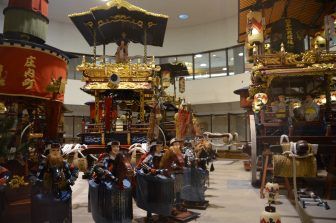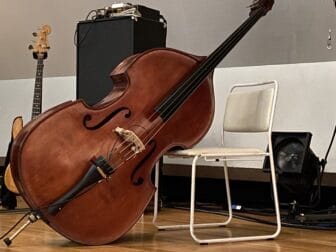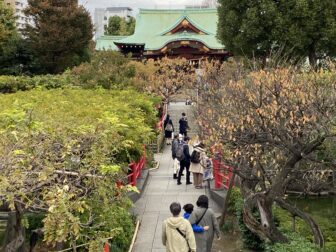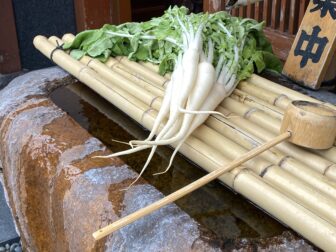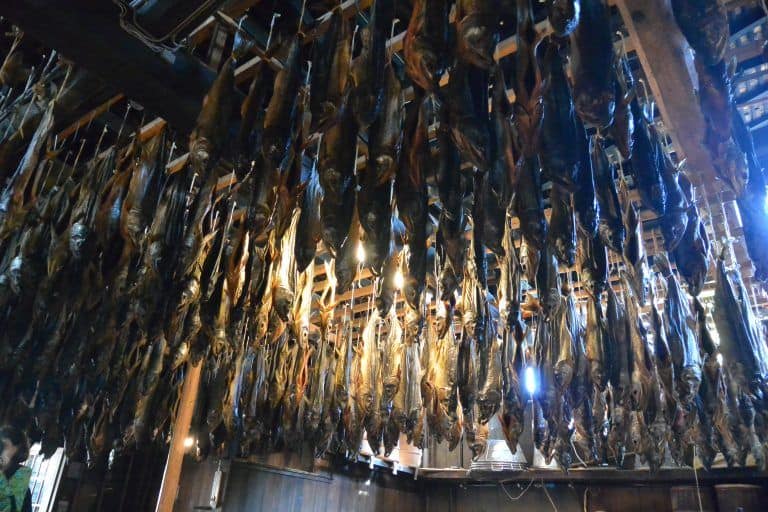
[ Sept.2018 ] Murakami city in the Niigata prefecture in Japan is not huge, with a population of only about 60,000 people, but there are many famous products.
One of them is salmon.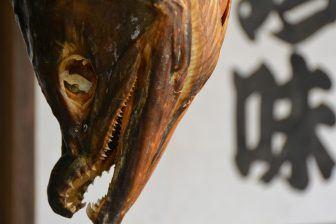
We visited a shop called ‘Kikkawa’.
The shop assistant said “Please visit the other room at the end of the shop”, so we went there and were really surprised.
There were many great salmon hanging from the ceiling.
I have never seen anything like this.
They are fish, so the room smelled fishy, but we stayed there for a long time to take many photos.
According to the booklet we got there, the number of salmon they had there was more than 1,000.
Apparently, there is a document saying that Murakami paid their taxes with salmon during the Heian period (794 – 1185) to the Kyoto government.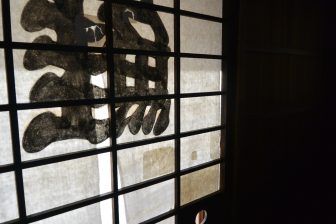
Therefore, this industry has got a very long history.
Those hanging salmon are called “Salmon Shiobiki (salt cured)”.
I translated the text of the booklet : “We rub the unrefined salt into the salmon carefully one by one, by hand, and pickled them for 4 or 5 days. Then we hang them for 3 to 4 weeks to expose them thoroughly to the cold north-west wind”.
So what we saw was the last stage of the process.
Apparently, this cold wind stimulates the amino-acid fermentation, which makes salmon matured and gives it that special flavour.
This Kikkawa started trading in 1626 as a sake brewery but after WW2, they changed into the salt-cured salmon production to recover the traditional salmon business, because by then it had been dying out.
The building we visited itself was 140 years old.
So it was clear that this shop was the oldest in the town, but after that, we saw hanging salmon many times here and there in the town.
For example, in the house of Wakabayashi, an important cultural asset which we visited after Kikkawa, had some salmon hanging, too and each had a price tag of 10,000 yen.
This Wakabayashi family had been Samurai warriors, working for the domain of Murakami since more than 200 years ago, until the Meiji period started in 1868.
The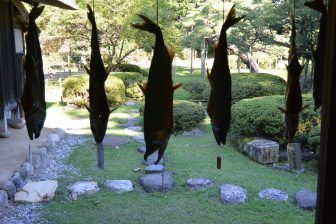
It is a typical middle class Samurai house and not many like this are left in the east of Japan.
In addition to this house, we visited ‘Oshagiri Hall’ and the Murakami History and Culture Museum.
Oshagiri means the festive float, which is paraded during the Murakami Big Festival and we saw them in the hall.
By buying the 500 yen (£3.40, €3.90, $4.45) ticket, we could enter Wakabayashi house, Oshagiri Hall and the Murakami History and Culture Museum.


